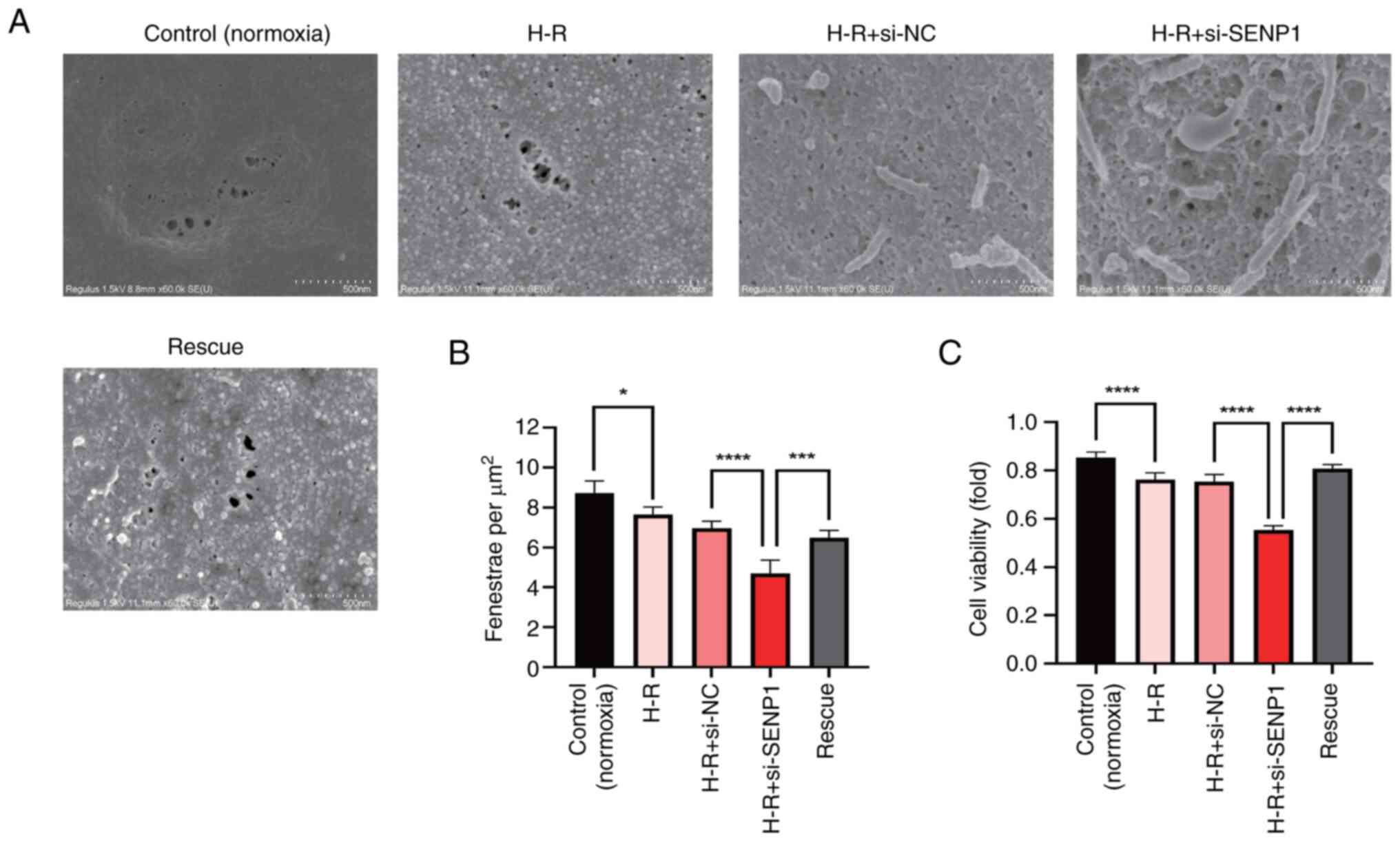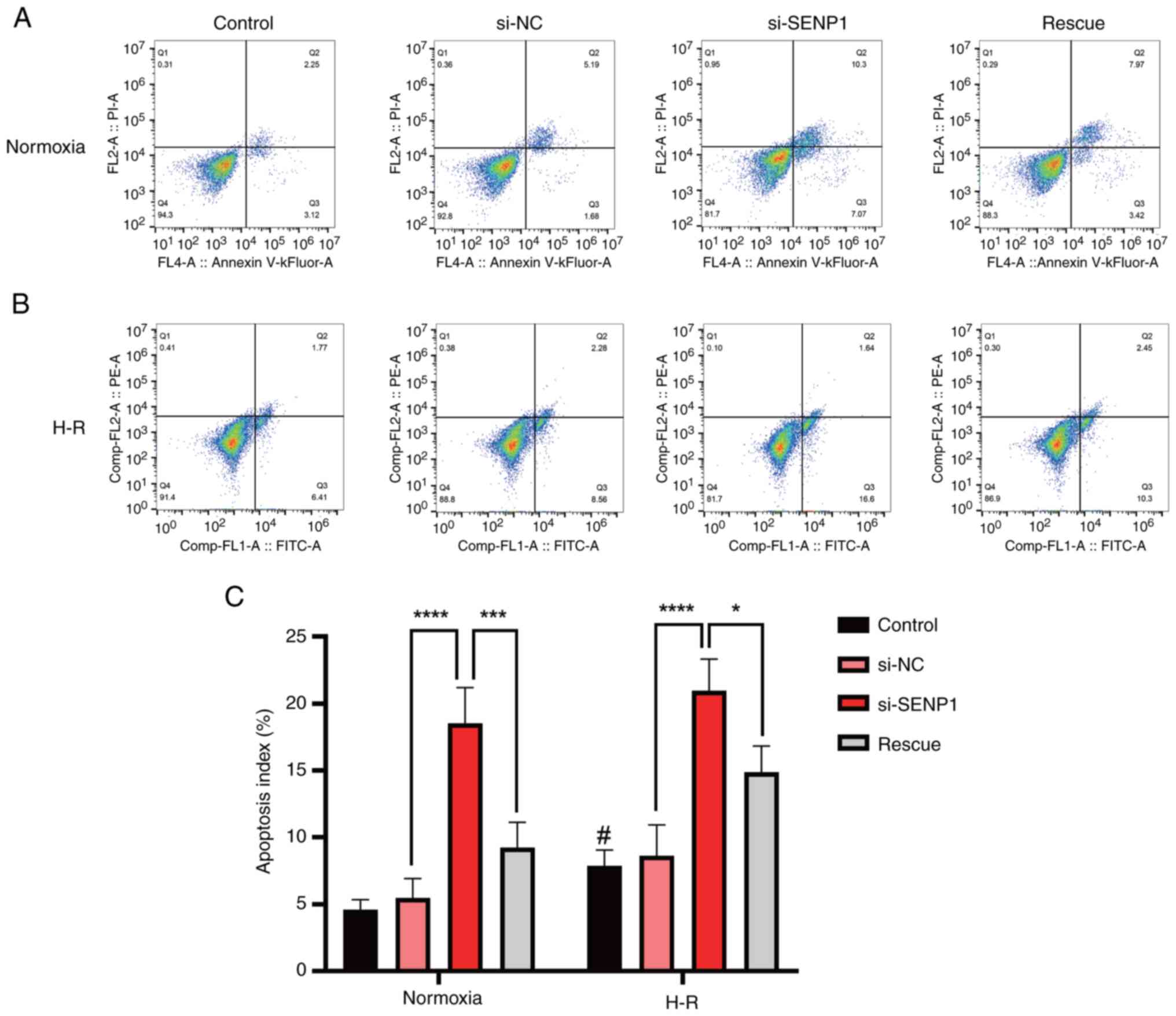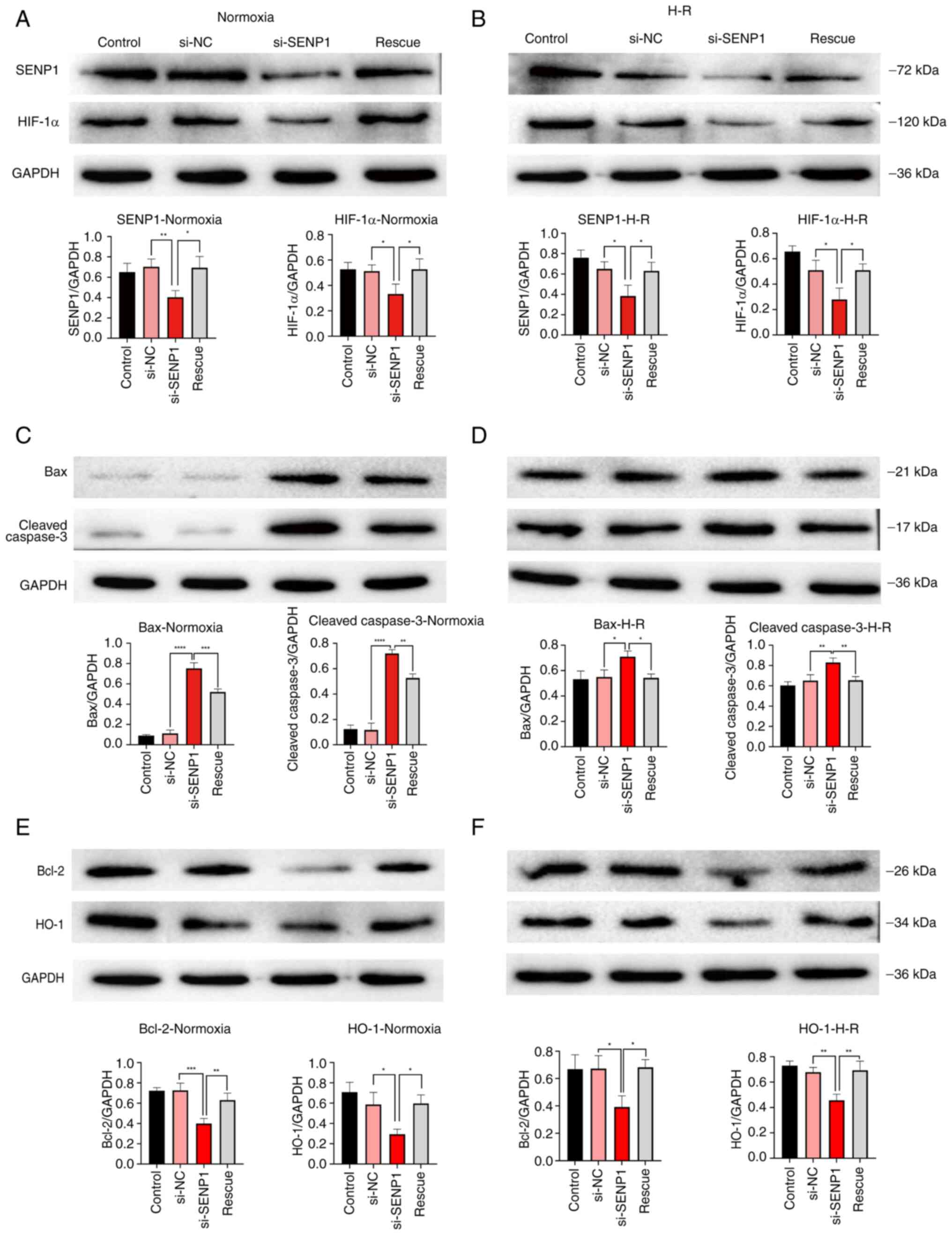|
1
|
Yang W, Chen J, Meng Y, Chen Z and Yang J:
Novel targets for treating ischemia-reperfusion injury in the
liver. Int J Mol Sci. 19:13022018. View Article : Google Scholar : PubMed/NCBI
|
|
2
|
Selzner N, Rudiger H, Graf R and Clavien
PA: Protective strategies against ischemic injury of the liver.
Gastroenterology. 125:917–936. 2003. View Article : Google Scholar : PubMed/NCBI
|
|
3
|
Dar WA, Sullivan E, Bynon JS, Eltzschig H
and Ju C: Ischaemia reperfusion injury in liver transplantation:
Cellular and molecular mechanisms. Liver Int. 39:788–801. 2019.
View Article : Google Scholar : PubMed/NCBI
|
|
4
|
Russo L, Gracia-Sancho J, García-Calderó
H, Marrone G, García-Pagán JC, García-Cardeña G and Bosch J:
Addition of simvastatin to cold storage solution prevents
endothelial dysfunction in explanted rat livers. Hepatology.
55:921–930. 2012. View Article : Google Scholar : PubMed/NCBI
|
|
5
|
Peralta C, Jiménez-Castro MB and
Gracia-Sancho J: Hepatic ischemia and reperfusion injury: Effects
on the liver sinusoidal milieu. J Hepatol. 59:1094–1106. 2013.
View Article : Google Scholar : PubMed/NCBI
|
|
6
|
Hide D, Warren A, Fernandez-Iglesias A,
Maeso-Diaz R, Peralta C, Le Couteur DG, Bosch J, Cogger VC and
Gracia-Sancho J: Ischemia/reperfusion injury in the aged liver: The
importance of the sinusoidal endothelium in developing therapeutic
strategies for the elderly. J Gerontol A Biol Sci Med Sci.
75:268–277. 2020.PubMed/NCBI
|
|
7
|
Wang X, Walkey CJ, Maretti-Mira AC, Wang
L, Johnson DL and DeLeve LD: Susceptibility of Rat steatotic liver
to ischemia-reperfusion is treatable with liver-selective matrix
metalloproteinase inhibition. Hepatology. 72:1771–1785. 2020.
View Article : Google Scholar : PubMed/NCBI
|
|
8
|
Stolz DB, Ross MA, Ikeda A, Tomiyama K,
Kaizu T, Geller DA and Murase N: Sinusoidal endothelial cell
repopulation following ischemia/reperfusion injury in rat liver
transplantation. Hepatology. 46:1464–1475. 2007. View Article : Google Scholar : PubMed/NCBI
|
|
9
|
Caldwell-Kenkel JC, Currin RT, Tanaka Y,
Thurman RG and Lemasters JJ: Reperfusion injury to endothelial
cells following cold ischemic storage of rat livers. Hepatology.
10:292–299. 1989. View Article : Google Scholar : PubMed/NCBI
|
|
10
|
Hui AM, Kawasaki S, Makuuchi M, Nakayama
J, Ikegami T and Miyagawa S: Liver injury following normothermic
ischemia in steatotic rat liver. Hepatology. 20:1287–1293. 1994.
View Article : Google Scholar : PubMed/NCBI
|
|
11
|
Jawad R, D'Souza M, Selenius LA, Lundgren
MW, Danielsson O, Nowak G, Björnstedt M and Isaksson B:
Morphological alterations and redox changes associated with hepatic
warm ischemia-reperfusion injury. World J Hepatol. 9:1261–1269.
2007. View Article : Google Scholar
|
|
12
|
DeLeve LD: Liver sinusoidal endothelial
cells and liver regeneration. J Clin Invest. 123:1861–1866. 2013.
View Article : Google Scholar : PubMed/NCBI
|
|
13
|
DeLeve LD, Wang X, Hu L, McCuskey MK and
McCuskey RS: Rat liver sinusoidal endothelial cell phenotype is
maintained by paracrine and autocrine regulation. Am J Physiol
Gastrointest Liver Physiol. 287:G757–G763. 2004. View Article : Google Scholar : PubMed/NCBI
|
|
14
|
DeLeve LD and Maretti-Mira AC: Liver
sinusoidal endothelial cell: An update. Semin Liver Dis.
37:377–387. 2017. View Article : Google Scholar : PubMed/NCBI
|
|
15
|
Funyu J, Mochida S, Inao M, Matsui A and
Fujiwara K: VEGF can act as vascular permeability factor in the
hepatic sinusoids through upregulation of porosity of endothelial
cells. Biochem Biophys Res Commun. 280:481–485. 2001. View Article : Google Scholar : PubMed/NCBI
|
|
16
|
Xie G, Wang X, Wang L, Wang L, Atkinson
RD, Kanel GC, Gaarde WA and Deleve LD: Role of differentiation of
liver sinusoidal endothelial cells in progression and regression of
hepatic fibrosis in rats. Gastroenterology. 142:918–927.e6. 2012.
View Article : Google Scholar : PubMed/NCBI
|
|
17
|
Qing Z, Huang H, Yang S, Lin J, Zeng Z,
Duan J, Yuan B and Ming T: Hypoxia maintains the fenestration of
liver sinusoidal endothelial cells and promotes their proliferation
through the SENP1/HIF-1α/VEGF signaling axis. Biochem Biophys Res
Commun. 540:42–50. 2021. View Article : Google Scholar : PubMed/NCBI
|
|
18
|
Cheng J, Kang X, Zhang S and Yeh ET:
SUMO-specific protease 1 is essential for stabilization of
HIF1alpha during hypoxia. Cell. 131:584–695. 2007. View Article : Google Scholar : PubMed/NCBI
|
|
19
|
Cui CP, Wong CCL, Kai AKL, Ho DWH, Lau
EYT, Tsui YM, Chan LK, Cheung TT, Chok KSH, Chan ACY, et al: SENP1
promotes hypoxia-induced cancer stemness by HIF-1α deSUMOylation
and SENP1/HIF-1α positive feedback loop. Gut. 66:2149–2159. 2017.
View Article : Google Scholar : PubMed/NCBI
|
|
20
|
Qu S, Yuan B, Zhang H, Huang H, Zeng Z,
Yang S, Ling J, Jin L and Wu P: Heme oxygenase 1 attenuates
hypoxia-reoxygenation injury in mice liver sinusoidal endothelial
cells. Transplantation. 102:426–432. 2018. View Article : Google Scholar : PubMed/NCBI
|
|
21
|
Livak KJ and Schmittgen TD: Analysis of
relative gene expression data using real-time quantitative PCR and
the 2(−Delta Delta C(T)) method. Methods. 25:402–408. 2001.
View Article : Google Scholar : PubMed/NCBI
|
|
22
|
Saidi RF and Kenari SKH: Liver
ischemia/reperfusion injury: An overview. J Invest Surg.
27:366–379. 2014. View Article : Google Scholar : PubMed/NCBI
|
|
23
|
Gasbarrini A, Borle AB, Farghali H, Bender
C, Francavilla A and Van Thiel D: Effect of anoxia on intracellular
ATP, Na+i, Ca2+i, Mg2+i, and cytotoxicity in rat hepatocytes. J
Biol Chem. 267:6654–6663. 1992. View Article : Google Scholar : PubMed/NCBI
|
|
24
|
Cannistrà M, Ruggiero M, Zullo A, Gallelli
G, Serafini S, Maria M, Naso A, Grande R, Serra R and Nardo B:
Hepatic ischemia reperfusion injury: A systematic review of
literature and the role of current drugs and biomarkers. Int J
Surg. 33 (Suppl 1):S57–S70. 2016. View Article : Google Scholar : PubMed/NCBI
|
|
25
|
Høyer-Hansen M and Jäättelä M:
AMP-activated protein kinase: A universal regulator of autophagy?
Autophagy. 3:381–383. 2007. View Article : Google Scholar : PubMed/NCBI
|
|
26
|
Kim HS, Montana V, Jang HJ, Parpura V and
Kim JA: Epigallocatechin gallate (EGCG) stimulates autophagy in
vascular endothelial cells: A potential role for reducing lipid
accumulation. J Biol Chem. 288:22693–22705. 2013. View Article : Google Scholar : PubMed/NCBI
|
|
27
|
Ghislat G, Patron M, Rizzuto R and Knecht
E: Withdrawal of essential amino acids increases autophagy by a
pathway involving Ca2+/calmodulin-dependent kinase kinase-β
(CaMKK-β). J Biol Chem. 287:38625–38636. 2012. View Article : Google Scholar : PubMed/NCBI
|
|
28
|
Qing Z, Huang H, Luo Q, Lin J, Yang S, Liu
T, Zeng Z and Ming T: Hypoxia promotes the proliferation of mouse
liver sinusoidal endothelial cells: miRNA-mRNA expression analysis.
Bioengineered. 12:8666–8678. 2021. View Article : Google Scholar : PubMed/NCBI
|
|
29
|
Poisson J, Lemoinne S, Boulanger C, Durand
F, Moreau R, Valla D and Rautou PE: Liver sinusoidal endothelial
cells: Physiology and role in liver diseases. J Hepatol.
66:212–227. 2017. View Article : Google Scholar : PubMed/NCBI
|
|
30
|
Gu J, Fan Y, Liu X, Zhou L, Cheng J, Cai R
and Xue S: SENP1 protects against myocardial ischaemia/reperfusion
injury via a HIF1α-dependent pathway. Cardiovasc Res. 104:83–92.
2014. View Article : Google Scholar : PubMed/NCBI
|
|
31
|
Pibiri M, Leoni VP and Atzori L: Heme
oxygenase-1 inhibitor tin-protoporphyrin improves liver
regeneration after partial hepatectomy. Life Sci. 204:9–14. 2018.
View Article : Google Scholar : PubMed/NCBI
|














